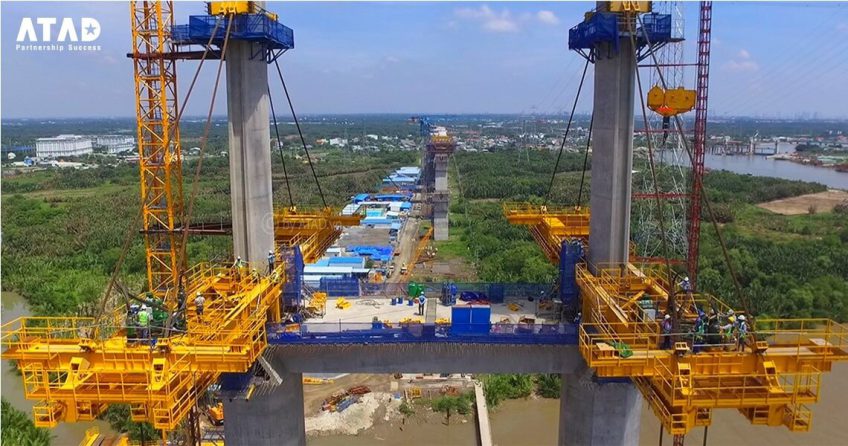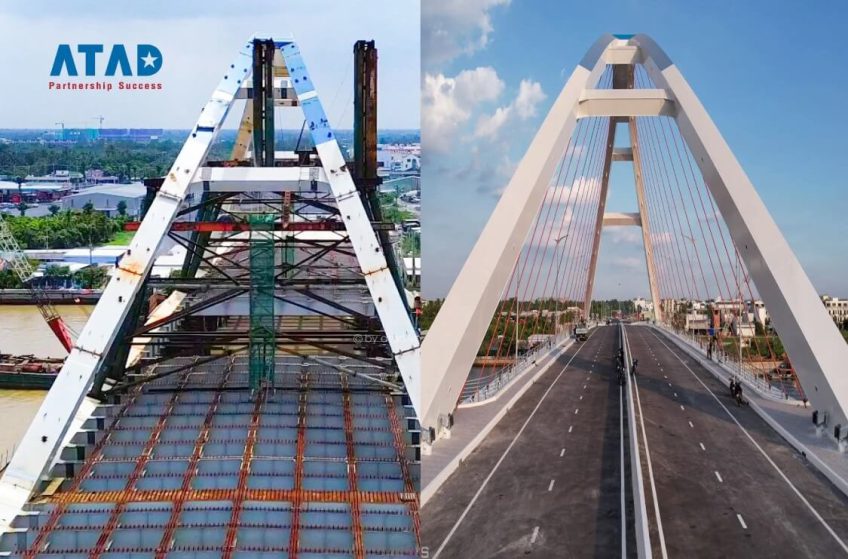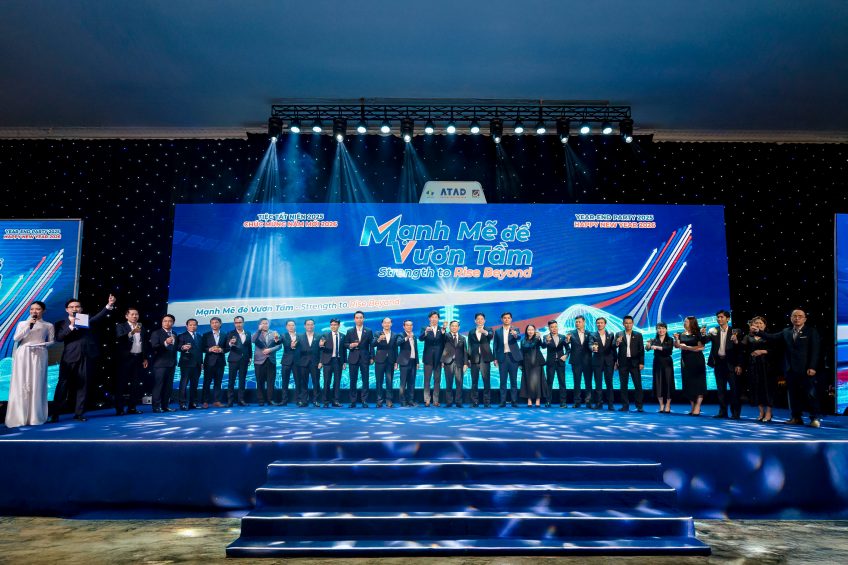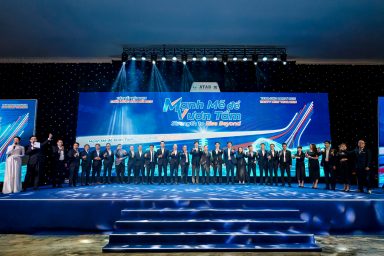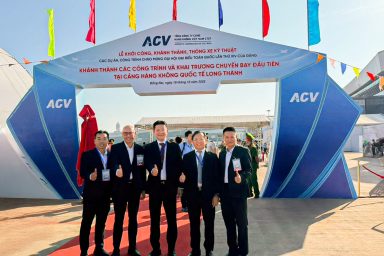Lightweight superstructures; steel bridge superstructures are typically lighter than other construction materials, often resulting in lower foundation costs and a reduced overall budget. Additionally, lighter superstructures can reduce seismic forces, which can be a significant advantage in high seismic areas. The ability to modify and adapt in the future; if there is a need to address increased future loads, new traffic demands, road expansions, or other configuration changes, steel bridge components can be added and adjusted accordingly.
Heavy steel structures – Binh Khanh cable-stayed bridge
Other materials do not offer similar adaptability and often require replacement for new loads or changes in design, reliability, and redundancy; the reliable components of steel bridges are achieved through design practices and construction redundancy. By utilizing damage tolerance principles, effective and efficient redundancy can be achieved through system-level or component-level mechanisms, and this tolerance can be integrated with the bridge inspection frequency. Furthermore, exposed tension elements of steel bridges during use enhance the ability to detect damage during daily visual inspections, thereby further improving safety and reliability.
Heavy Steel Structure – Tran Hoang Na Bridge:
The structure features large spans made from Heavy Steel Structure, with the ability to extend over 500 feet in the form of deck beams, arch bridges, suspension bridges, cable-stayed bridges, and trusses. For these large-span applications, steel offers advantages such as controllable production, lighter components, and durability. It is ideal for rail transport and test transport applications; this bridge is well-suited for rail and transportation uses because the flexible pipe system can provide high strength and stiffness, such as with deck beams, through beams, or truss bridges. The high strength-to-weight ratio of steel is particularly suitable for supporting rail loads, nearly five times that of traditional highway load capacities. The stiffness characteristics provided by steel bridges can meet stricter operational requirements for live loads, rails, and transportation loads.
On-site inspection capabilities allow for visual assessment of the steel bridge since the inspector can easily access all primary load-bearing components to evaluate their effective use. The key load-bearing components will not be obscured from the inspector’s view, and generally, there is no need for expensive special equipment or non-destructive testing methods to ascertain their condition. Inspectors can access the main load-bearing parts and take any necessary physical measurements to provide evaluators with the data needed for accurate load assessments.
Maintaining and repairing the bridge is efficient; when necessary, the steel bridge can be effectively repaired and continued in service without completely replacing it. Additional steel components can be added, or existing ones can be disassembled and replaced without permanently dismantling the bridge. Impacts and damage from oversized vehicles under the bridge can often be easily repaired using documented thermal straightening technology. Maintenance and repairs of steel structures can often be carried out while keeping all or part of the traffic operational on the infrastructure, thus extending the functional lifespan of the existing bridge.










